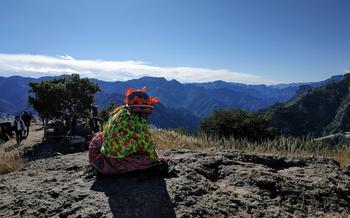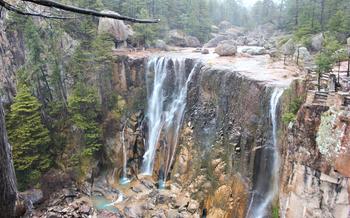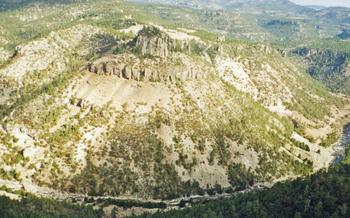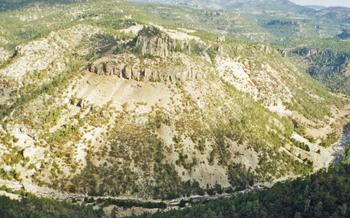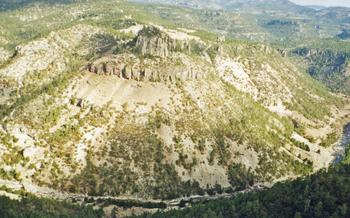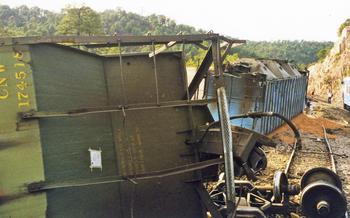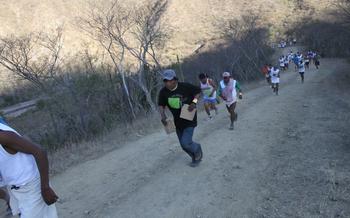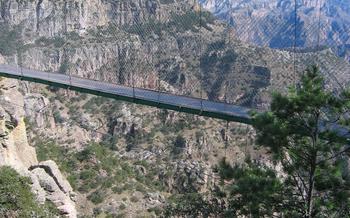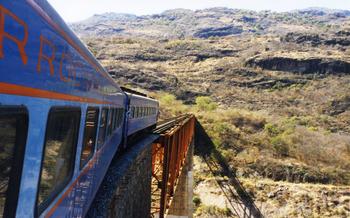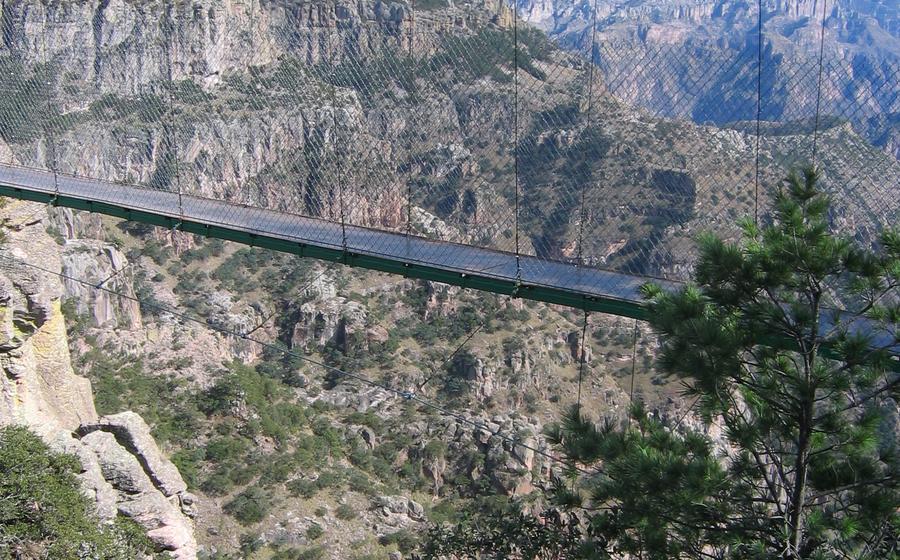
The Giant Mushrooms and Frogs Valley
- The Giant Mushrooms and Frogs Valley: A Unique Natural Wonder
- The Science Behind the Giant Mushrooms
- The Valley of the Frogs
- Hiking in the Copper Canyon: A Thrilling Adventure
- The Tarahumara People: Guardians of the Copper Canyon
- The Copper Canyon Train: A Journey Through Time
- The Divisadero: A Breathtaking Viewpoint
- The Urique Canyon: A Hidden Gem
- Batopilas Mission: A Step Back in Time
- The Cerocahui Mission: A Place of Peace
- The Copper Canyon Ecotourism Center: A Place to Learn and Connect
- Insider Tip: The Best Time to Visit the Copper Canyon
The Giant Mushrooms and Frogs Valley: A Unique Natural Wonder
In the heart of the Copper Canyon, nestled amidst towering cliffs and lush vegetation, lies a hidden marvel of nature—the Giant Mushrooms and Frogs Valley. These extraordinary rock formations, carved by centuries of erosion, resemble giant mushrooms and frogs, creating a surreal and enchanting landscape.
Located in the municipality of Urique, the Giant Mushrooms and Frogs Valley is a testament to the power of nature's artistry. The mushroom-shaped rocks, some reaching heights of over 30 feet, stand tall and proud, their caps resembling the umbrellas of mythical giants. The frog-like formations, with their rounded bodies and long legs, add a touch of whimsy to the scene.
The Giant Mushrooms and Frogs Valley is a true geological wonder, unlike anything you've ever seen before. It's a place where imagination runs wild, and you can't help but feel a sense of awe and wonder as you explore this magical realm.
The Science Behind the Giant Mushrooms
The Giant Mushrooms of the Copper Canyon are a fascinating natural phenomenon, and scientists have been studying them for decades to understand their unique characteristics. These mushrooms are not actually plants but fungi, and they belong to the species Agaricus blazei murill.
They are composed of a network of hyphae, which are thread-like structures that form the mushroom's body. The mushrooms grow in clusters, and each mushroom can weigh up to 50 pounds and reach a diameter of 3 feet.
They are so large because they have a symbiotic relationship with the trees in the forest. The mushrooms receive nutrients from the trees, and in return, they help the trees to absorb water and minerals from the soil. The mushrooms also play an important role in the decomposition of organic matter, which helps to recycle nutrients back into the ecosystem.
The Valley of the Frogs
The Valley of the Frogs, located in the heart of the Copper Canyon, is a unique and fascinating ecosystem that is home to an incredible diversity of frog species. With its lush vegetation, crystal-clear streams, and towering cliffs, the Valley of the Frogs is a haven for these amphibians, which can be found in all shapes, sizes, and colors.
Some of the most common frog species found in the Valley of the Frogs include the Tarahumara frog, the canyon tree frog, and the red-eyed tree frog. The Tarahumara frog is a small, brown frog that is endemic to the Copper Canyon region. The canyon tree frog is a larger, green frog that is found in the trees and shrubs of the valley. The red-eyed tree frog is a beautiful frog with bright red eyes and a vibrant green body.
There are so many frogs in the Valley of the Frogs because the environment is ideal for them. The valley is home to a variety of insects and other small animals that provide food for the frogs. The lush vegetation provides cover and protection from predators. And the humidity and temperature are perfect for frog reproduction.
The best time to visit the Valley of the Frogs is during the rainy season, which runs from June to October. During this time, the valley is at its most lush and green, and the frogs are most active. Visitors can enjoy hiking through the valley, spotting frogs, and listening to their calls.
Hiking in the Copper Canyon: A Thrilling Adventure
The Copper Canyon offers a variety of hiking trails that cater to all levels of hikers, from beginners to experienced adventurers. Whether you're looking for a leisurely stroll or a challenging trek, you'll find plenty of options to choose from.
Some of the most popular hiking trails in the Copper Canyon include:
- The Divisadero Trail: This trail offers stunning views of the canyon and is perfect for a day hike or a short overnight trip.
- The Urique Canyon Trail: This trail takes you through the heart of the Urique Canyon, one of the most remote and beautiful canyons in the Copper Canyon.
- The Batopilas Trail: This trail follows the old mining road from Batopilas to Urique and offers a glimpse into the region's history and culture.
- The Cusárare Waterfall Trail: This trail leads to the Cusárare Waterfall, one of the most impressive waterfalls in the Copper Canyon.
Hiking in the Copper Canyon is a rewarding experience that offers stunning scenery, challenging terrain, and a chance to connect with nature.
Here are some tips for hiking in the Copper Canyon:
- Be prepared for the weather. The weather in the Copper Canyon can change quickly, so be sure to pack layers and a raincoat.
- Bring plenty of water. The Copper Canyon is a dry region, so it's important to stay hydrated.
- Wear comfortable shoes. The terrain in the Copper Canyon can be rough, so be sure to wear comfortable shoes with good traction.
- Be aware of your surroundings. The Copper Canyon is home to a variety of wildlife, so be aware of your surroundings and keep an eye out for animals.
- Leave no trace. Please pack out all of your trash and leave the Copper Canyon as you found it.
The Tarahumara People: Guardians of the Copper Canyon
an indigenous people who have inhabited the Copper Canyon region for centuries. They are known for their deep connection to nature and their ability to live in harmony with the land. The Tarahumara have a rich culture and traditions that have been passed down from generation to generation. They are skilled weavers, basket makers, and potters, and they have a deep knowledge of the medicinal properties of plants. The Tarahumara are also known for their long-distance running ability, and they often participate in ultra-marathons and other running events.
The Tarahumara have a strong sense of community and cooperation, and they work together to provide for the needs of everyone in the village. They are also very welcoming to visitors, and they are happy to share their culture and traditions with others. If you are fortunate enough to meet the Tarahumara people, you will be impressed by their kindness, generosity, and wisdom.
The Copper Canyon Train: A Journey Through Time
The Copper Canyon Train, also known as El Chepe, is an iconic train that winds its way through the breathtaking landscapes of the Copper Canyon. This legendary train has been operating for over a century, and it offers passengers a unique and unforgettable journey through one of the most beautiful and rugged regions of Mexico.
The Copper Canyon Train departs from the city of Chihuahua and travels through the states of Chihuahua and Sinaloa, passing through 86 tunnels and 37 bridges along the way. The journey covers a distance of over 350 miles and takes approximately 15 hours to complete.
One of the highlights of the Copper Canyon Train journey is the descent into the Urique Canyon, which is one of the deepest canyons in the world. The train winds its way down the steep canyon walls, offering passengers breathtaking views of the surrounding landscape.
The Copper Canyon Train is a popular tourist attraction, and it is a great way to experience the natural beauty and cultural heritage of the Copper Canyon. The train offers a variety of classes of service, including first class and economy, and it is also possible to book private cars for a more luxurious experience.
Here are some tips for taking the Copper Canyon Train:
- Book your tickets in advance, especially if you are traveling during the peak season.
- Arrive at the station at least 30 minutes before the train's departure time.
- Bring a camera to capture the stunning scenery along the way.
- Wear comfortable shoes, as you will be doing a lot of walking.
- Bring a jacket, as the temperatures can be cool in the mountains.
- Enjoy the ride! The Copper Canyon Train is a truly unique and unforgettable experience.
The Divisadero: A Breathtaking Viewpoint
The Divisadero is an awe-inspiring viewpoint located within the Copper Canyon. Perched at the brink of a sheer cliff, it offers panoramic vistas of the canyon's rugged terrain, plunging waterfalls, and verdant valleys. The name "Divisadero" aptly translates to "the viewpoint" in Spanish, reflecting its role as a prime spot for soaking in the canyon's grandeur.
The Divisadero is easily accessible by car or tour bus, making it a popular destination for visitors to the Copper Canyon. Once there, visitors can marvel at the breathtaking views, capture stunning photographs, and immerse themselves in the tranquility of the surroundings. For those seeking a more immersive experience, guided tours are available, providing insights into the history, geology, and ecology of the canyon.
One of the highlights of the Divisadero is the glass-bottom viewing platform that extends over the edge of the cliff. This thrilling vantage point allows visitors to peer down into the depths of the canyon and experience the sensation of floating in mid-air. For the more adventurous, zip-lining across the canyon is a thrilling way to appreciate the vastness and beauty of the landscape.
The Divisadero also offers a range of amenities for visitors, including a restaurant, gift shop, and restrooms. Whether you're seeking a breathtaking viewpoint, an adrenaline-pumping adventure, or simply a place to relax and soak in the natural beauty, the Divisadero is an unmissable destination within the Copper Canyon.
The Urique Canyon: A Hidden Gem
The Urique Canyon is one of the most spectacular canyons in the Copper Canyon region, but it is also one of the least visited. This is due in part to its remote location, but it is also because it is not as well-known as some of the other canyons in the region. However, the Urique Canyon is well worth a visit for those who are looking for a truly off-the-beaten-path experience.
The Urique Canyon is located in the southwestern part of the Copper Canyon region, and it is the deepest canyon in Mexico. It is also the home to the Urique River, which is one of the most powerful rivers in the country. The canyon walls are sheer and unforgiving, and they reach heights of over 1,800 meters. The river at the bottom of the canyon is a raging torrent, and it is a sight to behold.
There are a number of ways to experience the Urique Canyon. One option is to hike along the rim of the canyon. This is a challenging hike, but it is also very rewarding. The views from the rim of the canyon are simply breathtaking. Another option is to take a boat trip down the Urique River. This is a more relaxing way to experience the canyon, and it is also a great way to see the wildlife that lives in the area.
No matter how you choose to experience it, the Urique Canyon is a truly special place. It is a place of unspoiled beauty, and it is a place that will stay with you long after you have left.
Batopilas Mission: A Step Back in Time
Amidst the rugged landscapes and vibrant culture of the Copper Canyon, the Batopilas Mission stands as a testament to the region's rich history and religious heritage. Founded in the late 17th century by Jesuit missionaries, the mission played a pivotal role in spreading Christianity among the indigenous Tarahumara people.
Situated in the picturesque town of Batopilas, the mission's striking architecture showcases a blend of Spanish colonial and Baroque influences. Its imposing facade, adorned with intricate carvings and sculptures, hints at the grandeur of its past. Step inside, and you'll be greeted by a serene and awe-inspiring interior, featuring vaulted ceilings, ornate altars, and beautifully preserved religious artifacts.
The Batopilas Mission is not merely a historical monument; it's a living testament to the enduring faith and resilience of the Tarahumara people. Throughout the centuries, the mission has served as a gathering place for the community, hosting religious services, festivals, and celebrations. Even today, the mission remains an active center of worship, where the local faithful come together to pray, seek solace, and celebrate their cultural heritage.
Visiting the Batopilas Mission is a unique opportunity to step back in time and immerse yourself in the captivating history of the Copper Canyon. Whether you're a history buff, a religious enthusiast, or simply someone who appreciates stunning architecture, the Batopilas Mission is a must-see destination that will leave you with a lasting impression.
The Cerocahui Mission: A Place of Peace
Nestled in the heart of the Sierra Madre Occidental Mountains, the Cerocahui Mission stands as a testament to the enduring spirit of the Tarahumara people. Founded in 1680 by Jesuit missionaries, this 17th-century mission has played a pivotal role in the history and culture of the region.
The mission's humble beginnings can be traced back to the arrival of Father Juan María de Salvatierra, who established a small chapel here in the late 17th century. Over the years, the mission grew in size and importance, becoming a center of religious and cultural life for the Tarahumara people.
Today, the Cerocahui Mission is a beautifully preserved example of Spanish colonial architecture. Its thick adobe walls, red-tiled roof, and intricate stone carvings reflect the artistry and craftsmanship of the Tarahumara people. The mission's interior is equally impressive, with its vaulted ceilings, colorful frescoes, and ornate altars.
Beyond its architectural significance, the Cerocahui Mission holds deep spiritual and cultural meaning for the Tarahumara people. It is a place where they come to pray, celebrate, and connect with their ancestors. The mission is also a symbol of their resilience and their ability to preserve their traditions in the face of adversity.
For visitors, the Cerocahui Mission offers a glimpse into the rich history and culture of the Tarahumara people. It is a place to learn about their beliefs, traditions, and way of life. The mission is also a popular destination for hikers and nature lovers, who come to explore the surrounding mountains and forests.
The Copper Canyon Ecotourism Center: A Place to Learn and Connect
The Copper Canyon Ecotourism Center is a non-profit organization dedicated to promoting sustainable tourism in the Copper Canyon region. The center offers a variety of programs and services to help visitors learn about the region's unique ecosystems, cultures, and history.
At the Copper Canyon Ecotourism Center, you can learn about the region's rich biodiversity, the challenges facing the local communities, and the importance of sustainable tourism. You can also get involved in a variety of conservation and community development projects, such as reforestation, wildlife monitoring, and cultural preservation.
The center offers a variety of educational programs, including guided tours, workshops, and presentations. You can also learn about the region's history and culture through the center's library and museum.
The Copper Canyon Ecotourism Center is a great place to learn about the Copper Canyon region and get involved in sustainable tourism. The center's friendly and knowledgeable staff is always happy to answer your questions and help you plan your trip.
Insider Tip: If you are interested in learning more about the Copper Canyon region, be sure to visit the Copper Canyon Ecotourism Center. The center offers a variety of programs and services to help you learn about the region's unique ecosystems, cultures, and history.
Insider Tip: The Best Time to Visit the Copper Canyon
The best time to visit the Copper Canyon is during the dry season, which runs from October to May. During this time, the weather is warm and sunny, with little chance of rain. The trails are also in good condition, making it easier to hike and explore the canyon.
However, if you are looking for a more adventurous experience, you may want to consider visiting during the rainy season, which runs from June to September. During this time, the waterfalls are at their fullest, and the canyon is lush and green. However, be prepared for rain, mud, and slippery trails.
No matter when you choose to visit, the Copper Canyon is a truly special place. With its stunning scenery, rich culture, and abundance of wildlife, it is a destination that you will never forget.
